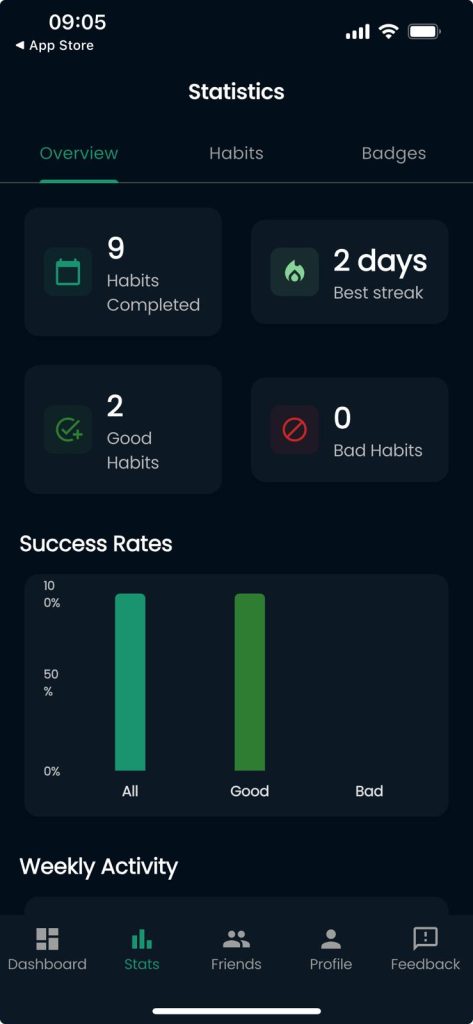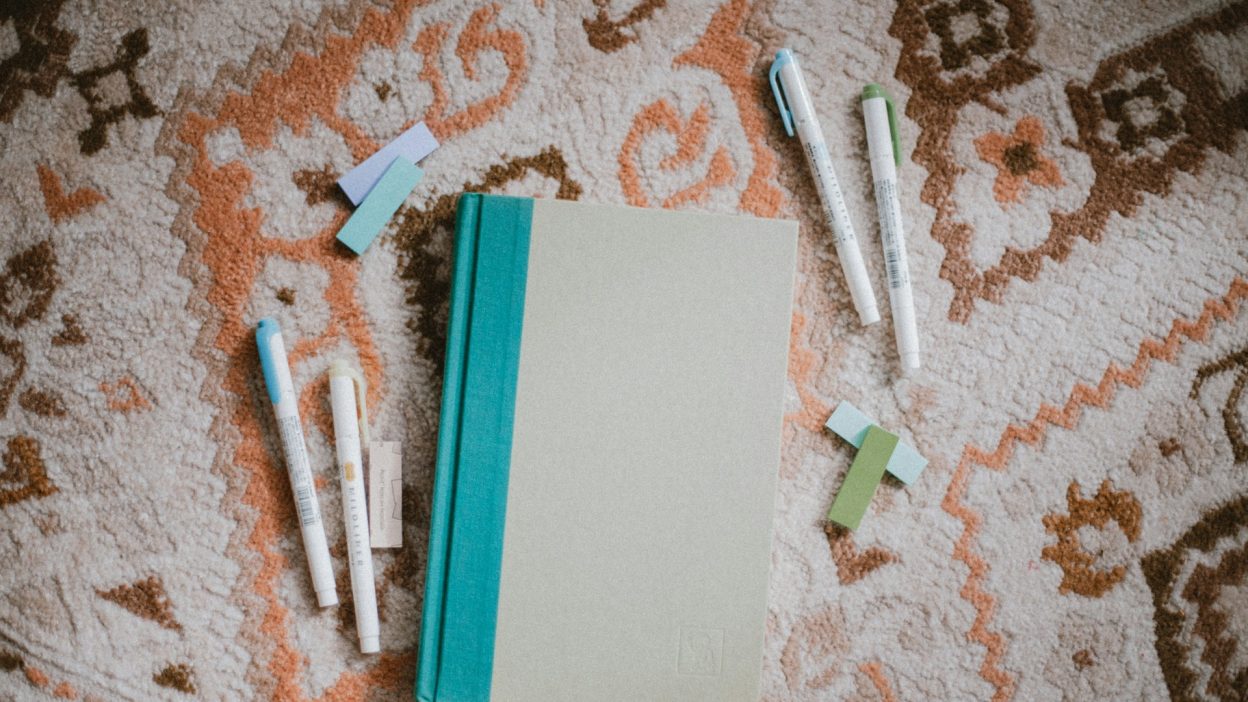- Create simple systems for your daily routines
- Pair a new habit with an existing one to make it easier to integrate
- Create habit loops: cue, routine, and reward
- Use trackers to make the progress visible and satisfying
Building new routines sounds exciting, but most resolutions fizzle out faster than a forgotten gym membership. The good news? Habit building doesn’t have to feel like a battle of willpower. In this guide, I’ll show you how science, smart cues, and playful tools can help you stay consistent without burning out.

Why Motivation Alone Isn’t Enough
Motivation is a feeling, and feelings change faster than the weather. One day you’re pumped, the next you’d rather nap. What truly makes habit building stick is creating simple systems that carry you through even when your enthusiasm takes a holiday. Think about:
- alarms that remind you to do ten squats,
- a sticky note on the fridge
- an evening routine that happens automatically, no pep talk required.
Build Habits That Carry You Forward
Instead of waiting to feel inspired, design habits that almost run themselves, like autopilot for your daily routines. When you connect new behaviors to things you already do, you’ll notice progress without needing an internal cheerleader.
How to Pair Habits with Daily Routines
In habit building, pairing creates a natural flow where new habits slip into your life almost unnoticed. Habit stacking is a simple trick: you take something you always do and stack a new habit directly after it.
For example, once you’ve poured your morning coffee, read five pages, or after brushing your teeth, learn three new words in a new language. This way, your brain links the new behavior to something familiar, making habit building smoother and less overwhelming.
Keep It Short and Sweet
When you’re pairing habits, start small. The goal isn’t to run a marathon after tying your shoes. Pairing habits works best when the action is:
- quick,
- clear,
- easy to remember.
Why Small Habits Beat Big Resolutions
Small habits don’t look impressive at first glance, but they’re sneaky game-changers. Reading after waking up or stretching for two minutes can spark bigger lifestyle changes over time. These tiny steps slip easily into your routine, making habit building less about pressure and more about gentle, steady progress.

Consistency Beats Intensity
Small habits focus on consistency, which means you keep showing up even when life feels messy. The power of habit building lies in repetition: doing little things daily until they become part of who you are.
Build Momentum Without Stress
Once small habits stick, they create momentum. Reading may lead to discovering new hobbies, and two minutes of stretching may grow into a regular workout. Suddenly, you’re building routines that feel natural, not forced.
By starting small, you create a foundation that lasts far longer than any bold resolution scribbled in a new year’s planner.
The Science Behind Habit Loops
Think of a habit loop as your brain’s shortcut for saving energy. It’s a three-part cycle:
- cue,
- routine,
- reward.
The cue triggers the behavior, the routine is the action you take, and the reward is the payoff that tells your brain, “Do this again.”
Why Cues Matter More Than Motivation
Motivation feels unreliable, but cues are steady and predictable. A cue can be as simple as hearing your alarm, walking into the kitchen, or feeling bored at work. Once the cue fires, your brain slips into autopilot and follows the routine. That’s why, in habit building, designing smart cues is more reliable than waiting for inspiration to appear.
Rewards Seal the Deal
Rewards are the glue that locks a habit into place. They don’t have to be huge, just something your brain enjoys:
- the satisfaction of ticking off a task,
- the taste of fresh coffee,
- the calm feeling after stretching.
Over time, your brain connects the action with pleasure, which strengthens the loop and makes the routine easier to repeat.
Rewiring the Loops That Don’t Serve You
The beauty of habit loops is that once you see how they work, you can change them. By swapping the routine while keeping the same cue and reward, you can gradually shift bad habits into better ones. Instead of scrolling endlessly after dinner, you could replace that routine with reading or a quick walk.

How to Design Cues That Trigger Action
Think of cues as gentle nudges that make habit building automatic instead of something you constantly need to remember.
Make Cues Visible and Obvious
If your cues hide, your habits won’t stand a chance. Place a book near your coffee machine as a reminder to read, or keep your running shoes near the door for an evening jog. When cues are easy to spot, they invite you to act without overthinking. In habit building, visibility is everything.
Keep It Fun and Personal
Your cues don’t have to be boring. A favorite song can cue a workout, a candle can cue relaxation, and a phone reminder with a playful message can cue gratitude journaling. When your cues feel personal and even a little fun, your brain is far more likely to respond positively. In habit building, the best cues are the ones that actually make you smile.
Celebrating Wins Without Breaking the Flow
When you celebrate small wins, your brain lights up with dopamine, making you want to repeat the behavior again. It’s one of the simplest ways to reinforce progress in habit building. A celebration doesn’t need to be big, just something that makes you pause and enjoy the moment.
Keep Rewards Small but Sweet
The key is rewarding yourself without derailing your progress. If you’re building a fitness habit, don’t celebrate every run with cake. Instead, choose small, meaningful rewards like ticking a box in your tracker, sharing progress with a friend, or treating yourself to a new playlist.
In habit building, these little boosts give you encouragement without undoing your hard work.
Celebrate Progress, Not Perfection
You don’t have to wait for the “perfect streak” to celebrate. Progress deserves recognition, even if it’s just three days in a row. Celebrating early and often builds confidence, reminding you that effort counts as much as results. This mindset keeps you moving forward, especially when the bigger goal still feels far away.
Build Celebration Into the Routine
The smartest way to celebrate wins is to make it part of the routine itself. Finish your journal entry with a smiley doodle, end your workout with a happy dance, or simply say “yes!” out loud after ticking off your habit.
Tools to Make Tracking Effortless
Tracking isn’t about being strict, but making progress visible and satisfying. When you see a streak building, it sparks motivation to keep going. Tracking acts like a mirror, showing you the effort you might otherwise overlook.

Habit Apps That Feel Like Games
Many habit tracker apps turn progress into a playful experience. You can earn streaks, unlock badges, or even compete with friends. These fun elements make it feel less like a chore and more like a game. By gamifying habit building, you enjoy the process instead of dreading it.
Conclusion
At the end of the day, lasting change isn’t about chasing giant goals or waiting for perfect motivation. It’s about steady habit building that fits your life. When you focus on small steps, smart cues, and celebrating progress along the way, routines become less of a struggle and more of a natural rhythm.
By combining science with simple daily actions, you’ll discover that building habits can be fun, rewarding, and something you actually look forward to.



